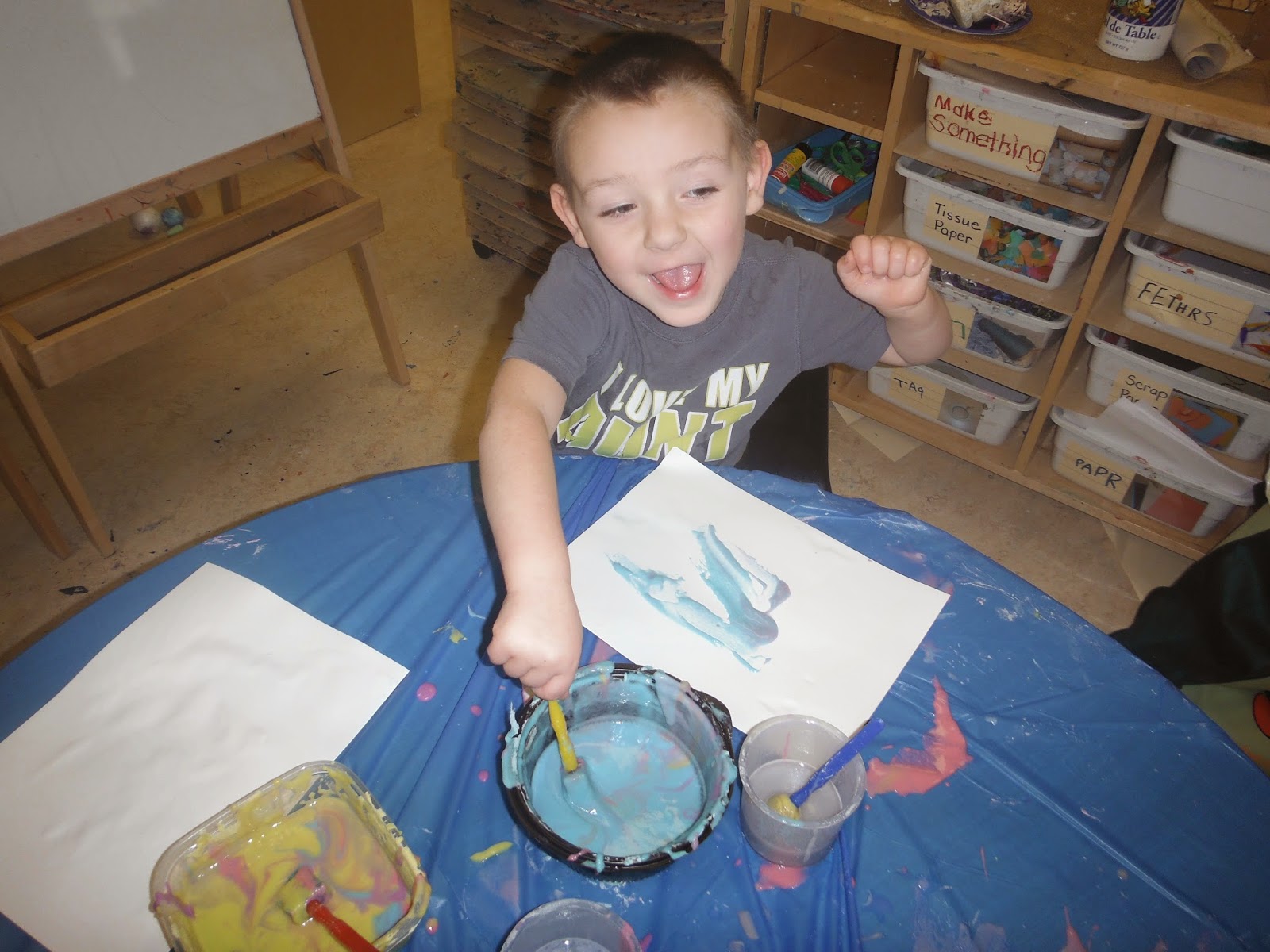While painting the walls of our train station, one student noticed that purple was created when he mixed red and blue paint. This made other children curious to see what colours they could create when mixing paint.
The following week, a tray containing three plastic cups partially filled with water awaited the students upon arrival. During circle, we added yellow food colouring to one cup and blue to the other. The water in the middle cup was left untouched. A paper towel was placed in the cup with yellow food colouring, extending into the clear water. Another paper towel was placed in the cup with blue food colouring and extended into the centre cup with clear water.
The students made predictions about what they thought would happen. Our experiment was placed in a prominent spot in the classroom so that the students could observe the changes taking place throughout the day. They were amazed to see the yellow and blue colours travel through the paper towels to create green-coloured water in the centre cup.
Throughout the week, we recreated this experiment using other primary colour combinations.
You can try another one of our experiments at home. All you need is whole milk, food colouring, a cotton swab and dish soap.
During community circle, whole milk was added to a shallow dish. Next, red, yellow, blue and green food colouring was added. The students predicted what would happen if the cotton swab was pressed in the middle of the milk. They were disappointed when nothing happened. We tried the experiment again, this time with a drop of dish soap added to the tip of the cotton swab. New predictions were made. The students were excited to see the colours begin to move instantaneously as the cotton swab was pressed in the centre of the milk. The colours continued to swirl as long as the dish soap covered cotton swab remained in the milk.
When asked why they thought the dish soap moved when added to the milk, they had interesting ideas. Sydney thought it might be because the "dish soap is so strong," and Divjot wondered if "the dish soap smelled the colours and washed them away."
We also read the story, "White Rabbit's Color Book," by Alan Baker, which the students had an opportunity to retell at our puppet theatre.
At the art centre, student used primary water colours to create new colours. Coarse salt was added to the wet paint and brushed off when dry to create an interesting texture.
What skills did the students develop as a result of our colour exploration?
- Expanded social skills
- Expanded oral language
- Expanded written language
- Made predictions and observations
- Posed questions
- Used prior knowledge to make connections
- Expanded vocabulary
- Developed fine motor control
- Problem solved
- Identified and mixed colours
- Explored with different tools
- Developed a sense of design, colour and texture
- Retold a familiar story
- Used imagination to create visual art forms
















































